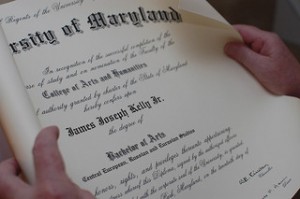Podcast: Play in new window | Download
Subscribe: Apple Podcasts | RSS
 We talk with Gary Bertoline about graphics communication, computer-aided design, credentials, and competency-based degree programs in this episode of The Engineering Commons.
We talk with Gary Bertoline about graphics communication, computer-aided design, credentials, and competency-based degree programs in this episode of The Engineering Commons.
- Adam is less stressed now that he’s earned his professional engineer (PE) license.
- Our guest for this episode is Gary Bertoline, Dean of Purdue University’s College of Technology. In addition to his administrative work, Dean Bertoline has authored a number of books on graphics communication and computer-aided design (CAD).
- Graphics is a communication medium, just like language or mathematics.
- Mental manipulation of figures and objects in three-dimensional space is known as spatial visualization.
- Jeff is old enough to have taken a drafting course in college that required T-squares, compasses, and triangular scales.
- Carmen expresses his desire that electrical engineers possess better drafting skills.
- According to Dean Bertoline, computer gaming can help improve visualization skills. So now you have an excuse!
- Ancestor to today’s CAD software, Sketchpad was a computer graphics program written in 1963 by Ivan Sutherland. (A YouTube video shows the software in action.)
- Autodesk and Dassault Systems are large companies that have survived in the competitive computer-aided drafting (CAD) industry.
- Many modern CAD packages include modules designed to assist with product lifecycle management (PLM).
- Brian mentions the use of a STEP file, which is an industry standard (ISO 10303) for exchanging 3D model information. The acronym stands for “Standard for the Exchange of Product model data.”
- HFSS is a commercial finite-element model solver for electromagnetic structures (owned by Ansys). Carmen isn’t sure of the acronym’s meaning, but Wikipedia tell us that it originally stood for “High Frequency Structural Simulator.”
- Carmen’s “E&M” reference refers to “electricity and magnetism.”
- Digital models can be made to behave as physical objects through the use of a physics engine, which is software that constrains the models to conform with “real-world” physical phenomena.
- Professional credentials might take the form of academic degrees, academic certificates, professional certificates, digital badges, or physical artifacts.
- Gary heads up Purdue’s Polytechnic Institute, which seeks to radically transform the undergraduate educational experience.
- Purdue is one of 108 United States institutions listed by the Carnegie Foundation as being a very high research activity university.
- Purdue University’s College of Technology was chartered in 1964, and it currently offers 30 undergraduate degree options across its seven academic departments.
- The first Polytechnic was École Polytechnique, founded in 1794 and located in Palaiseau, France.
- One can better understand the development and adoption of innovative technologies using the S Curve Framework.
- Our guest walks us thorough some of his organization’s early experiences in establishing a competency-based degree program.
- Jeff inquires whether competency badges might lead to employers defining their own unique sets of required competencies for potential employees.
- Gary tells us that T-shaped professionals are being sought out by industrial firms.
- Our guest mentions “Generation on a Tightrope,” a book that argues today’s students need a very different education from the one that their parents received.
- Also mentioned is “Creating Innovators,” a book that explores how the educational process must change to encourage young people to become innovators.
- Listeners will find additional information online about Purdue’s College of Technology, and the Purdue Polytechnic Institute.
- Dean Bertoline can be reached via email at: bertoline -=+ at +=- purdue.edu.
Thanks to Jim Kelly for the photo titled “My Diploma.” Podcast theme music by Paul Stevenson.